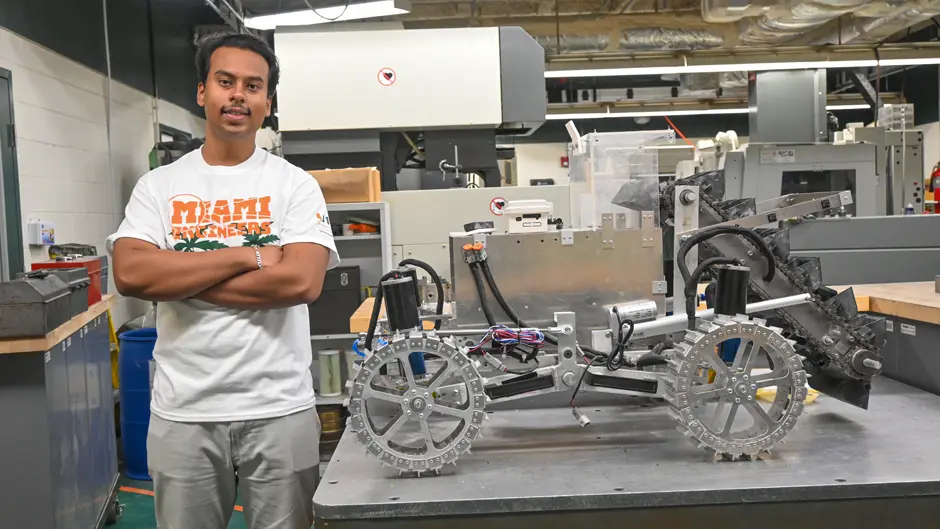Vinay Dharmik's curiosity for the cosmos started on the balcony of his two-story Mumbai, India, home when he was 6.
There, under the moon's glow, he and his mother would often dine, looking up at the planets Jupiter, Venus, and Mars, which appeared like points of light in the night sky, and observing other celestial objects such as the constellations of Orion and Ursa Major.
Today, as a University of Miami sophomore in the College of Engineering, Dharmik has taken his fascination with outer space to what he describes as an "interstellar level."
He wants to help protect astronauts from harmful radiation they would be exposed to during deep-space flights and colonizing missions on planets like Mars.
His method for doing so: using cow dung.
"My parents actually gave me the idea when I was in high school," said Dharmik, recalling the time his mother and physician father told him about the ancient Indian practice of plastering the exterior of rural homes with bovine waste to insulate the structures. "I started thinking: perhaps such a practice could be adapted to shield astronauts from harmful ionizing radiation they encounter in space."
So, Dharmik put his theory to the test. Using special software, he analyzed the chemical composition and thickness of cow dung, discovering that it could be effective in mitigating the effects of energetic ions, high-energy particles that are a form of ionizing radiation.
With support from the National Aerospace Laboratories in Bangalore, India, he then fashioned carbon-reinforced composite plates with cores consisting of cow dung, testing those plates at an atomic research center in Mumbai and getting promising results.
"The composites provided radiation shielding against charged particles comparable to established aerospace materials like polyethylene," Dharmik said. "And it achieved that performance at a fabrication cost more than 80 percent lower than high-performance alternatives like Ultra High Molecular Weight Polyethylene and Kevlar."
If he gets the proper approval and clearance, the aerospace engineering major hopes to continue his research at the College of Engineering. Until then, "I've got plenty to keep me busy," said Dharmik, who presented his research at the 74th International Astronautical Congress in Baku, Azerbaijan.

He worked on the team that competed in NASA's 2025 Lunabotics Challenge, designing the geometry for the student-built rover's linear actuators that dug into the artificial lunar soil. He plans to participate on this year's squad.
And he has been accepted as a research and development candidate in the Titans Space Industries' Titans Space Astronaut Class of 2025-2029. In that capacity, he is helping to develop a new type of reusable space plane as well as a space station of the future.
As a candidate in the program, he could also be in line to take a five-hour suborbital flight aboard a rocket sometime in early 2029.
"My goal as a researcher and an astronaut would be to push humanity to the maximum extent possible, and that means traveling far beyond Mars," Dharmik said. "I don't know if that will happen in my lifetime, but I can at least set the wheels in motion."






